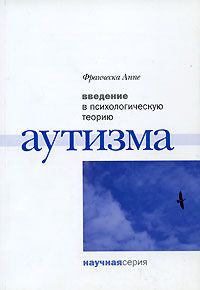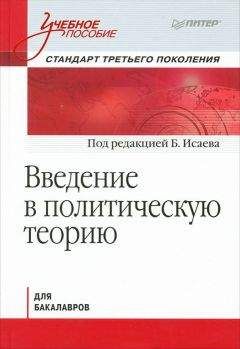Frith, U. 1970a. Studies in pattern detection in normal and autistic children: I. Immediate recall of auditory sequences. Journal of Abnormal Psychology 76, 413-20.
Frith, U. 1970b. Studies in pattern detection in normal and autistic children: II. Reproduction and production of color sequences. Journal of Experimental Child Psychology 10, 120-35.
Frith, U. 1972. Cognitive mechanisms in autism: Experiments with color and tone sequence production. Journal of Autism and Childhood Schizophrenia2, 160-73.
Frith, U. 1989a. Autism: explaining the enigma. Oxford: Basil Blackwell.
Frith, U. 1989b.Anew lookat language and communication in autism. British Journal of Disorders of Communication 24, 123-50.
Frith, U. 1991a. Autism and Asperger syndrome. Cambridge: Cambridge University Press.
Frith, U. 1991b. Translation and annotation of «autistic psycho-pathy» in childhood, by H. Asperger. See Frith (1991a), 37–92.
Frith, U. 1992. Cognitive development and cognitive deficit. The Psychologists, 13–19.
Frith, U. & B. Hermelin 1969. The role of visual and motor cues for normal, subnormal and autistic children. Journal of Child Psychology and Psychiatry 10, 153-63.
Frith, U. & M. Snowling 1983. Reading for meaning and reading for sound in autistic and dyslexic children. Journal of Developmental Psychology 1, 329-42.
Frith, U., J. Morton, A. M. Leslie 1991. The cognitive basis of a biological disorder: autism. Trends in Neuro science 14, 433-8.
Frith, U., F. Happe, F. Siddons 1994. Autism and theory of mind in everyday life. Social Development, 3, 108–124.
Ghaziuddin, M., L. Y. Tsai, N. Ghaziuddin 1992a. Brief report: a comparison of the diagnostic criteria for Asperger syndrome. Journal of Autism and Developmental Disorders 22, 643—9.
Ghaziuddin, M., L. Y. Tsai, N. Ghaziuddin 1992b. Brief report: a reappraisal of clumsiness as a diagnostic feature of Asperger syndrome. Journal of Autism and Developmental Disorders 22, 651-6.
Gillberg, C. 1986. Brief report: Onset at age 14 of a typical autistic syndrome. A case report of a girl with herpes simplex encephalitis. Journal of Autism and Developmental Disorders 16, 369-75.
Gillberg, C. 1989. Asperger's syndrome in 23 Swedish children. Developmental Medicine and Child Neurology 31, 520-31.
Gillberg, C. 1991. Clinical and neurobiological aspects of Asperger syndrome in six family studies. See Frith (1991a), 122-46.
Gillberg, C. 1992. TheEmanuel Miller Memorial Lecture lggKAutism and autistic-like conditions: subclasses among disorders of empathy. Journal of Child Psychology and Psychiatry 33, 813-42.
Gillberg, С. & M. Coleman (eds) 1992. The biology of the autistic syndromes—2ndedn. London: MacKeith.
Gillberg, С. & C. Forsell 1984. Childhood psychosis and neuro fibromatosis – more than a coincidence. Journal of Autism and Developmental Disorders 14, 1–9.
Gillberg, С. & Н. Schaumann 1982. Social class and infantile autism. Journal of Autism and Developmental Disorders 12, 223-8.
Gillberg, G., E. Persson, M. Grufman, U. Themner 1986. Psychiatric disorders in mildly and severely mentally retarded urban children and adolescents: epidemiological aspects. British Journal of Psychiatry 149, 68–74.
Gillberg, C., S. Steffenburg, G. Jakobsson 1987. Neurobiological findings in 20 relatively gifted children with Kanner-type autism or Asperger's syndrome. Developmental Medicine and Child Neurology 29, 641-9.
Gillberg, I. G. 1991. Autistic syndrome with onset at age 31 years: herpes encephalitis as a possible model for childhood autism. Developmental Medicine and Child Neurology 33, 912-29.
Goodenough, D. R., F. Grandini, I. Olkin, D. Pizzamiglio, D. Thayer, H. A. Witkin 1977. A study of X chromosome linkage with field dependence and spatial visualisation. Behaviour Genetics 7, 373-87.
Goodman, R. 1989. Infantile autism: a syndrome of multiple primary deficits? Journal of Autism and Developmental Disorders 19, 409-24.
Goodman, R. 1990. Technical note: are perinatal complications causes or consequences of autism? Journal of Child Psychology and Psychiatry 31, 809-12.
Gopnik, A. & J. Astington 1988. Children's understanding of representational change and its relation to the understanding of false belief and the appearance/reality distinction. Child Development 59, 26–37.
Gottschaldt, K. 1926. Ucber den Einfluss der Erfahrung auf die Welt der Wahrnehmung von Figuren. Psychologlsche ForschungS, 261–317.
Grandin, T. 1984. My experiences as an autistic child and review of selected literature. Journal of Orthomolecular Psychiatry 13, 144-75.
Grandin, T. & M.Scariano 1986. Emergence labelled autistic. Tunbridge Wells: Costello.
Green, W. H., M. Campbell, A. S. Hardesty, D. M. Grega, M. Padron-Gayor, J. Shell, L. Erlenmeyer-Kimling 1984. A comparison of schizophrenic and autistic children. Journal of the American Academy of Child and Adolescent Psychiatry, 23, 399–409.
Happe, F. G. E. lggla. the autobiographical writings of three asperger syndrome adults: problems of interpretation and implications for theory. See Frith (iggia), 207-42.
Happe, f. G. E. lggib. Theory of mind and communication in autism. PhD thesis, University of London.
Happe, F. G. E. igg3– communicative competence and theory of mind in autism: a test of Relevance theory. Cognition 48, 101-ig.
Happe, F. G. E. igg4a. an advanced test of theory of mind: understanding of story characters' thoughts and feelings by able autistic, mentally handicapped and normal children and adults. Journal of Autism and Developmental Disorders 24, i2g~54.
Happe, f. G. E. igg4b. annotation: psychological theories of autism: the «theory of mind» account and rival theories. Journal of Child Psychology and Psychiatry 35, 2i5~2g.
Happe, F. G. E. igg4c. the role of age and verbal ability in the theory of mind task performance of subjects with autism. Child Development, in press.
Happe, f. G. E. igg4d. central coherence, block design errors, and global-local similarity judgement in autistic subjects. In preparation.
Happe, f. G. E. igg4c. wechsler IQ profile and theory of mind in autism: a research note. Journal ofChild Psychology and Psychiatry, in press.
Happe, f. & u. frith igg4– theory of mind in autism. In Learning and Cognition in Autism,E. schopler & G. b. mesibov (eds), in press. new york: plenum press.
Harris, P. L. igg3– Pretending and planning. See Baron-Cohen et al. (1993b), 228-46.
Hart, C. ig8g. Without reason: a family copes with two generations of autism. New York: Penguin Books.
Hermelin, B. & N. O'Connor ig67. Remembering of words by psychotic and subnormal children. British Journal of Psychology 58, 213-8.
Hermelin, B. & N. O'Connor ig7o. Psychological experiments with autistic children. Oxford: Pergamon Press.
Hermelin, В. & N. O'Connor 1986. Idiot savant calendrical calculators: rules and regularities. Psychological Medicine 16, 885-93.
Hertzig, M. E., M. E. Snow, M. Sherman 1989. Affect and cognition in autism. Journal of the American Academy of Child and Adolescent Psychiatry, 28, 195-9.
Hobson, R. R 1986a. The autistic child's appraisal of expressions of emotion. Journal ofChild Psychology and Psychiatry 27, 321-42.
Hobson, R. P. 1986b. The autistic child's appraisal of expressions of emotion: a further study. Journal of Child Psychology and Psychiatry 27, 671-80.
Hobson, R. P. 1989. Beyond cognition: a theory of autism. In Autism: nature, diagnosis and treatment, G. Dawson (ed.), 22–48. New York: Guildford Press.
Hobson, R. P. 1990. On acquiring knowledge about people, and the capacity to pretend: a response to Leslie. Psychological Review 97, 114-21.
Hobson, R. P. 1993a. Autism and the development of mind. Hove, East Sussex: Lawrence Erlbaum Associates.
Hobson, R. P. 1993b. Understanding persons: the role of affect. See Baron-Cohen et al. (1993b) 204-27.
Hobson, R. P., J. Ouston, T. Lee 1988. What's in a face? The case of autism. British Journal of Psychology 79, 441-53.
Hobson, R. P., J. Ouston, T. Lee 1989. Naming emotion in faces and voices: abilities and disabilities in autism and mental retardation. British Journal of Developmental Psychology 7, 257-50.
Hornik, R., N. Risenhoover, M. Gunnar 1987. The effect of maternal positive, neutral, and negative affective communications on infant responses to new toys. Child Development58, 931-44.
Howlin, P. & M. Rutter 1987. The treatment of autistic children. Chichester: John Wiley.
Hughes, С. H. 1993. Executive dysfunction in autism. Doctoral thesis, University of Cambridge.
Hughes, С. H. &J. Russell 1993. Autistic children's difficulty with mental disengagement from an object: its implications for theories of autism. Developmental Psychology 29, 498–510.
Hunt, A. & J. Dennis 1987. Psychiatric disorder among children with tuberous sclerosis. Developmental Medicine and Child Neurology 29, 190-8.
Hurlburt, R. T. 1990. Sampling normal and schizophrenic inner experience. New York: Plenum Press.
Hurlburt, R., F. Happe, U. Frith 1994. Sampling the inner experience of autism: a preliminary report. Psychological Medicine 24.
Johnson, D.J. & H. R. Myklebust 1971. Learning disabilities. New York: Grune & Stratton
Johnson, M. H., F. Siddons, U. Frith, J. Morton 1992. Can autism be predicted on the basis of infant screening tests? Developmental Medicine and Child Neurology 34, 316-20
Kang, K. S. & D. K. Kang (eds) 1988. Folktales of India. London: Asia Publishing House.
Kanner, L. 1943. Autistic disturbances of affective contact. Nervous Child 2, 217-50.
Kanner, L. 1973. Childhood psychosis: initial studies and new insights. Washington, DC: V. H. Winston.
Kanner, L. & L. Eisenberg 1956. Early infantile autism 1943–1955. American Journal of Orthopsychiatry 26, 55–65.
Kay, P. & I. Kolvin 1987. Childhood psychoses and their borderlands. British Medical Bulletin 43, 570-86.
Kimchi, R. & S. E. Palmer 1982. Form and texture in hierarchically constructed patterns. Journal of Experimental Psychology: Human Perception and Performance 8, 521-35.
Klin, A., F. R. Volkmar, S. S. Sparrow 1992. Autistic social dysfunction: some limitations of the theory of mind hypothesis. Journal of Child Psychology and Psychiatry 33, 861-76.
Knobloch, H. & B. Pasamanick 1975. Some etiologic and prognostic factors in early infantile autism and psychosis. Pediatrics 55, 182-91.
Koffka, K. 1935. Principles ofGestaltpsychohgy. New York: Harcourt Brace.
Kohs, S. C. 1923. Intelligence measurement. New York: MacMillan.
Kramer, J. H., E. Kaplan, M.J. Blusewicz, K. A. Preston 1991. Visual hierarchical analysis of block design configural errors. Journal of Clinical and Experimental Neuropsychology 13, 455-65.
Landa, R., S. E. Folstein, C. Isaacs 1991. Spontaneous narrative-discourse performance of parents of autistic individuals. Journal of Speech and Hearing Research^, 1339-45.
Langdell, T. 1978. Recognition of faces: an approach to the study of autism. Journal of Child Psychology and Psychiatry 19, 255-68.
Leekam, S. &J. Perner 1991. Does the autistic child have ametarep-resentational deficit? Cognition 40, 203-18.
Leiner, H. C, A. L. Leiner, R. S. Dow 1986. Does the cerebellum contribute to mental skills? Behavioral Neuroscience 100, 443-54.
Leslie, A. M. 1987. Pretence and representation: The origins of «theory of mind». Psychological Review 94, 412-26.
Leslie, A. M. 1988. Some implications of pretence for mechanisms underlying the child's theory of mind. In Developingtheories oj'mind, J. W. Astington, P. L. Harris, D. R. Olson (eds), 19–46. New York: Cambridge University Press.
Leslie, A. M. & U. Frith 1988. Autistic children's understanding of seeing, knowing and believing. British Journal oj'Developmental Psychology 6, 315-24.
Leslie A. M. & F. Happe 1989. Autism and ostensive communication: the relevance of metarepresentation. Development andPsycho-patholagy 1, 205-12.
Leslie, A. M. & D. Roth 1993. What autism teaches us about metarepresentation. See Baron-Cohen et al. (1993b), 83-111.
Leslie, A. M. & L. Thaiss 1992. Domain specificity in conceptual development: evidence from autism. Cognition 43, 225-51.
Lister, S. 1992. The early detection of social and communication impairments. Doctoral thesis, University of London.
Lockyer, L. & M. Rutter 1970. A five to fifteen year follow-up study of infantile psychosis: IV. Patterns of cognitive ability. British Journal of Social and Clinical Psychology 9, 152-63.
Lord, C. 1991. Follow-up of two-year-olds referred for possible autism. Paper presented at the Biennial Meeting of the Society for Research in Child Development, Seattle.
Lord, С. & E. Schopler 1987. Neurobiological implications of sex differences in autism. In Neurobiological issues in autism, E. Schopler & G. Mesibov (eds), 192–211. New York: Plenum Press.




